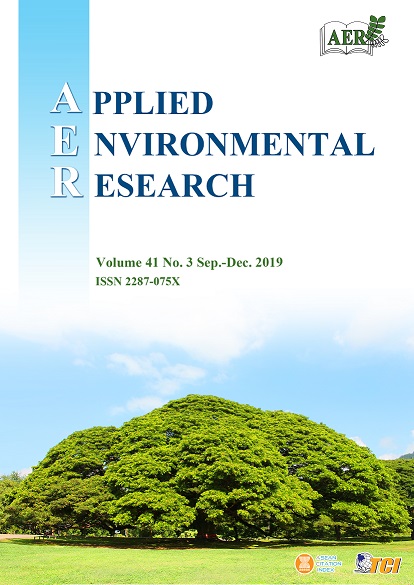A Study on Developing Ventilation in Restaurants in Re-purposed Row Houses
Main Article Content
Abstract
The building ventilation of seventy-seven row houses in eight districts in Chiang Mai province of Thailand was surveyed and investigated. A typical row house re-purposed as a restaurant refers to a 3.5 m high space with two stoves in the front of the building and a closed rear area to serve as storage. As a base-case, restaurants had an average capacity of 24 customers in the dining area. Measurements of internal air quality of a selected restaurant were conducted in the summer season of 2015 and 2017, and the results revealed average air temperatures of 36°C and 33°C, relative humidity values of 46% and 33%, and air speed values of 0.28 m s-1 and 0.10 m s-1, respectively. The Computerised Fluid Dynamics (CFD) and the Center for the Built Environment (CBE) thermal comfort tool were used to simulate the efficiency of current and proposed ventilation techniques and also analyse thermal comfort conditions for each scenario. Low-cost cooling techniques of air speed and humidity adjustment were chosen to improve thermal conductions. By applying the combined techniques, the overall temperature was reduced by 2°C and the thermal comfort levels were improved from the ‘hot’ to the ‘warm’ zone. Some conditions in the second restaurant are in the expanded ‘adaptive thermal comfort zone’. Although most results appear to exceed the ‘adaptive thermal comfort zone’, conditions could not be further ameliorated since 1.5 m s-1 was the maximum air speed that could be employed in the dining area to avoid wind discomfort. Limited investment in ventilation improvement was the main challenge since air-conditioners and multiple fans were not affordable and were also insufficient for the re-adaptation option. Feasibility study of ventilation improvement technique is limited in this study.
Article Details

This work is licensed under a Creative Commons Attribution-NonCommercial 4.0 International License.
Published articles are under the copyright of the Applied Environmental Research effective when the article is accepted for publication thus granting Applied Environmental Research all rights for the work so that both parties may be protected from the consequences of unauthorized use. Partially or totally publication of an article elsewhere is possible only after the consent from the editors.

